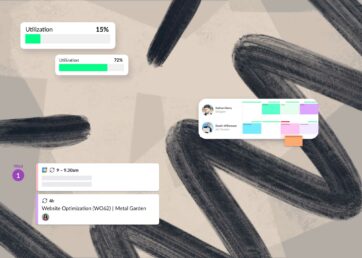Oyster mushrooms start to grow when you shock them by moving them from a dark and dry room to a bright and humid one. Unexpectedness is part of the plan.
Your projects and employees need a scheduling plan to grow, too—but preferably one that doesn’t include shocks. Only 52% of projects are delivered within their planned schedule. Common reasons include unclear goals, overallocation of resources, poor prioritization of tasks, and budget overruns.
In other words, poor resource management is a major barrier to successful projects.
Organizations, especially agencies, are switching to project management tools to solve this problem, but it’s tricky—project management tools don’t always take workloads and utilization rates into account. You need a resource scheduling plan that steers you toward project goals on time and budget but without overworking your employees.
It all sounds good on paper, but we know project managers often fall prey to inaccurate forecasting and resource overallocation. It’s easy to do if you’re scheduling employees manually or through a tool that doesn’t provide complete visibility.
Recognizing the three main barriers to setting up your resource scheduling plan will set you on the path to more effective resource scheduling.
In this article 📖
Inaccurate resource forecasting causes project bottlenecks
When you are blindsided by time off, sick leave, and the human nature of employment, it throws your forecasting out of order. The result? Project delays, budget issues, stressed employees, and dissatisfied stakeholders. You need a better way to handle resource forecasting.
As a project manager, your current resource forecasting process probably involves using a spreadsheet or project management tool to create your dream team. But while you can pick your ideal candidates to complete a project, the reality is that they may have other plans. And if you don’t have that visibility, you’re setting the project up for failure.
These rudimentary methods are prone to inaccurate resource forecasting because you end up overlooking who may be unavailable, on vacation, or simultaneously required for another project.
Let’s work through a schedule management example…
Your project team includes two senior developers, two designers, and one content writer.
The first developer (Sandy) only works four days a week while the second one (Charlie) has skill sets that require them to be simultaneously involved in two projects; that is, Charlie’s time will be split in half between two projects.
But without this visibility, you might allocate both developers for their full-time equivalent (FTE) of 40 hours a week for the duration of the project and commit to a due date.
The problem?
Your forecast is already based on inaccuracies. Sandy works 40 hours a week (we’ll get to the perils of 100% allocation in the next section), but Charlie is only available for 20 hours.
Besides the obvious math error with Charlie’s hours, if they need to collaborate on a deliverable, it’s possible that they may not have enough overlapping hours—which means by the time they meet and complete a shared task, your project is already delayed.
Meanwhile, the designers and content writers who are waiting on them to start their project tasks have little to do until the bottleneck is cleared.
Instead, your resource forecast needs to optimize your team’s workflow. You need more than project scheduling software—you need a resource scheduling tool that provides complete visibility into personalized schedules, vacations, skill sets, locations, time zones, and all the dependencies that are part of project planning.
The right resource scheduling software will give you this data alongside custom fields, specific filters, and utilization rates too. Once you have a handle on this data, you can monitor project progress by assessing what percentage of time is spent on non-billable work and determine whether you’re optimizing employee schedules.
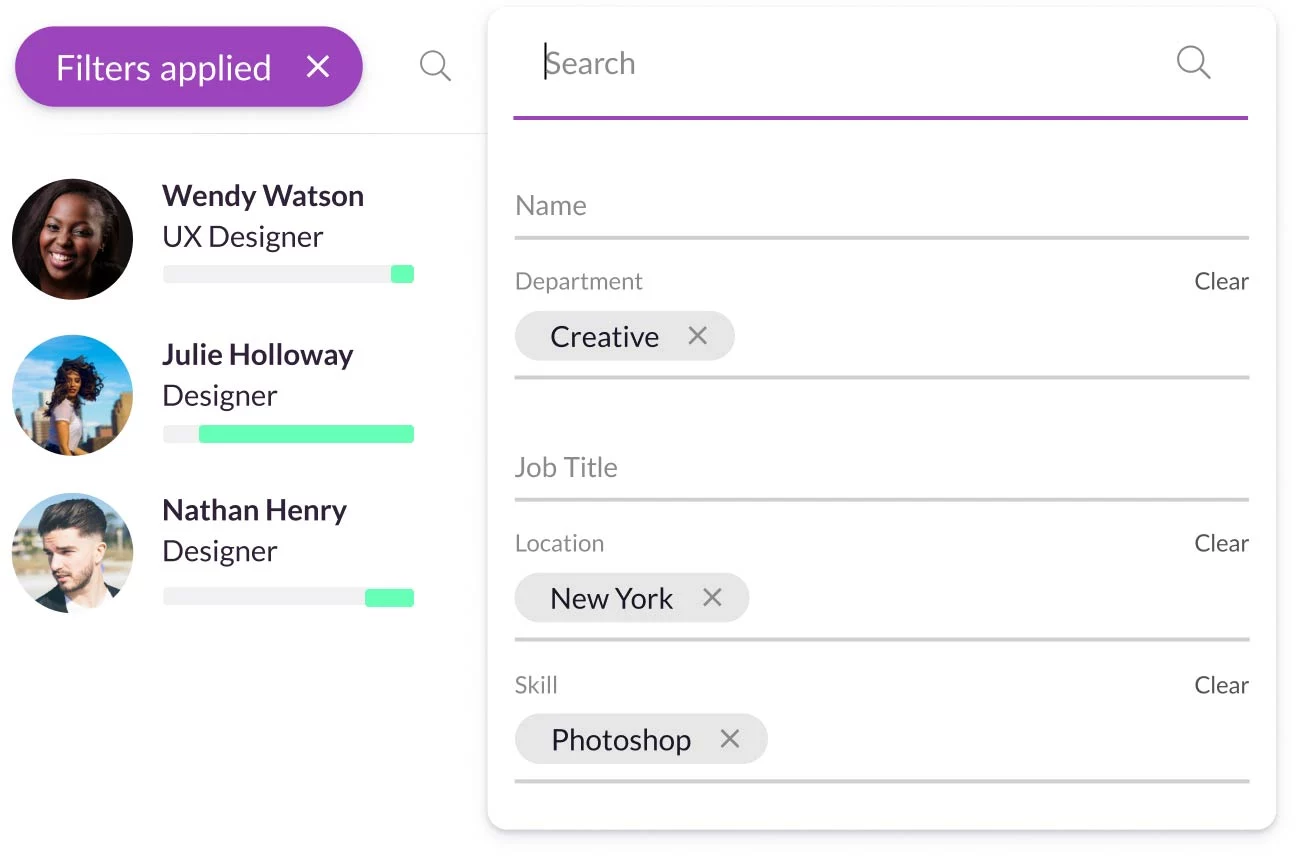
Resource overallocation results in low-quality work and project delays
Humans aren’t designed to do the same thing all day, every day, but project management tends to view employee work hours the same as availability. And it leads to resource overallocation. When you schedule employees for more hours than they can be productive, you’re setting your team up for failure—and for burnout.
Let’s say your entire project is expected to take 80 hours to complete with delivery in one week. If you schedule two full-time employees for the project (40 + 40 hours) and assume the deadline will be met, you are likely to get low-quality work and two very dissatisfied employees. Or a missed deadline and an unhappy customer.
Even though a full-time employee works 40 hours a week, they aren’t ‘working’ every billable minute. In fact, our brains have a “hard biological limit”—we are capable of deep focus work for only three to four hours a day.
The human brain needs time to recharge and take a break from intellectual labor.
This doesn’t mean employees slack for the rest of their workday. After all, there are administrative and learning tasks that are part of project activities, and those take up time, too.
Our brains can rest easy while we catch up on email, read that interesting article, or even let a work problem sit in our heads while we go for a walk or take a well-deserved break. When we are relaxed and feeling great, our brains produce dopamine, the chemical responsible for creativity and motivation. And that’s an ideal state for problem-solving, high productivity, and engagement at work.
But when you overallocate employees, they scramble to meet deadlines, which results in frustration, stress, and burnout. You rush to find freelancers to keep the project running and end up going over budget or delaying delivery, or both.
Instead, be proactive with your resource allocation by building buffer time into employee workloads.
It may sound counterintuitive, but if you aim for 100% utilization, you end up with lower productivity. But if you reduce the allocation of your employees to 80% of their hours, you leave breathing room for unexpected changes in the project lifecycle, like a sick employee.


“With the Guru software we get better insights into our daily planning. Great tool & easy to use.”
Task-based software does not include capacity planning
If you use task-based tools and project management software to track, delegate, and manage task lists, then you know they have limitations. For one, they are too focused on the work itself, not the people doing it. These tools often lack a bird’s-eye view of availability across your teams—a crucial aspect of effective resource allocation.
To avoid overallocation and to assign manageable workloads, you need a capacity planning tool that lets you view utilization by skill, department, and location over the coming weeks and months.
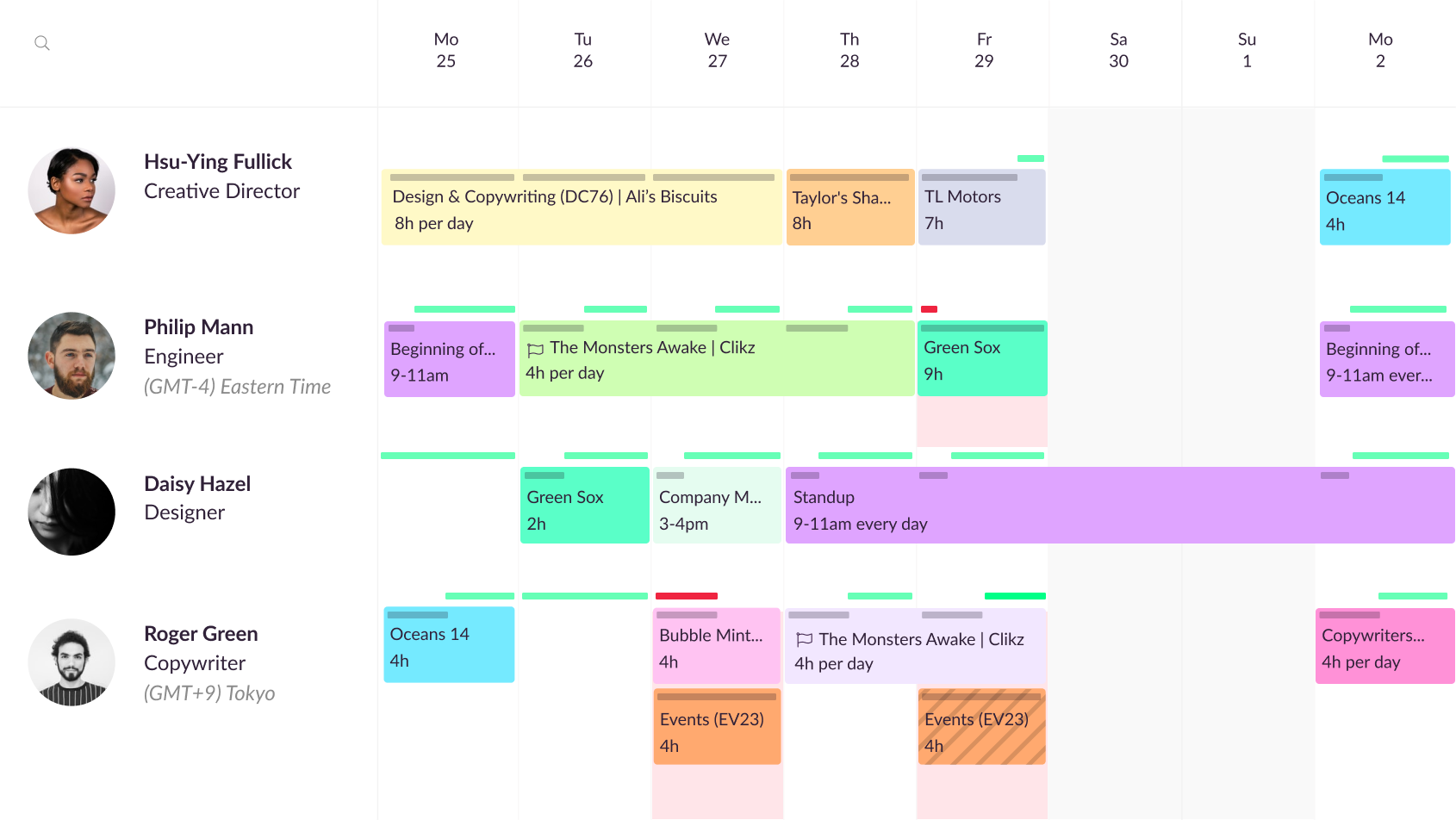
With a resource management tool like Resource Guru, which combines capacity planning and scheduling, you get a view of each team member’s bookings over a day, week, or month.
This helps you determine early on whether the team member is available for a project or if they are already over capacity. If you still need that team member for a project, our clash management feature alerts you so that you can make an informed choice.
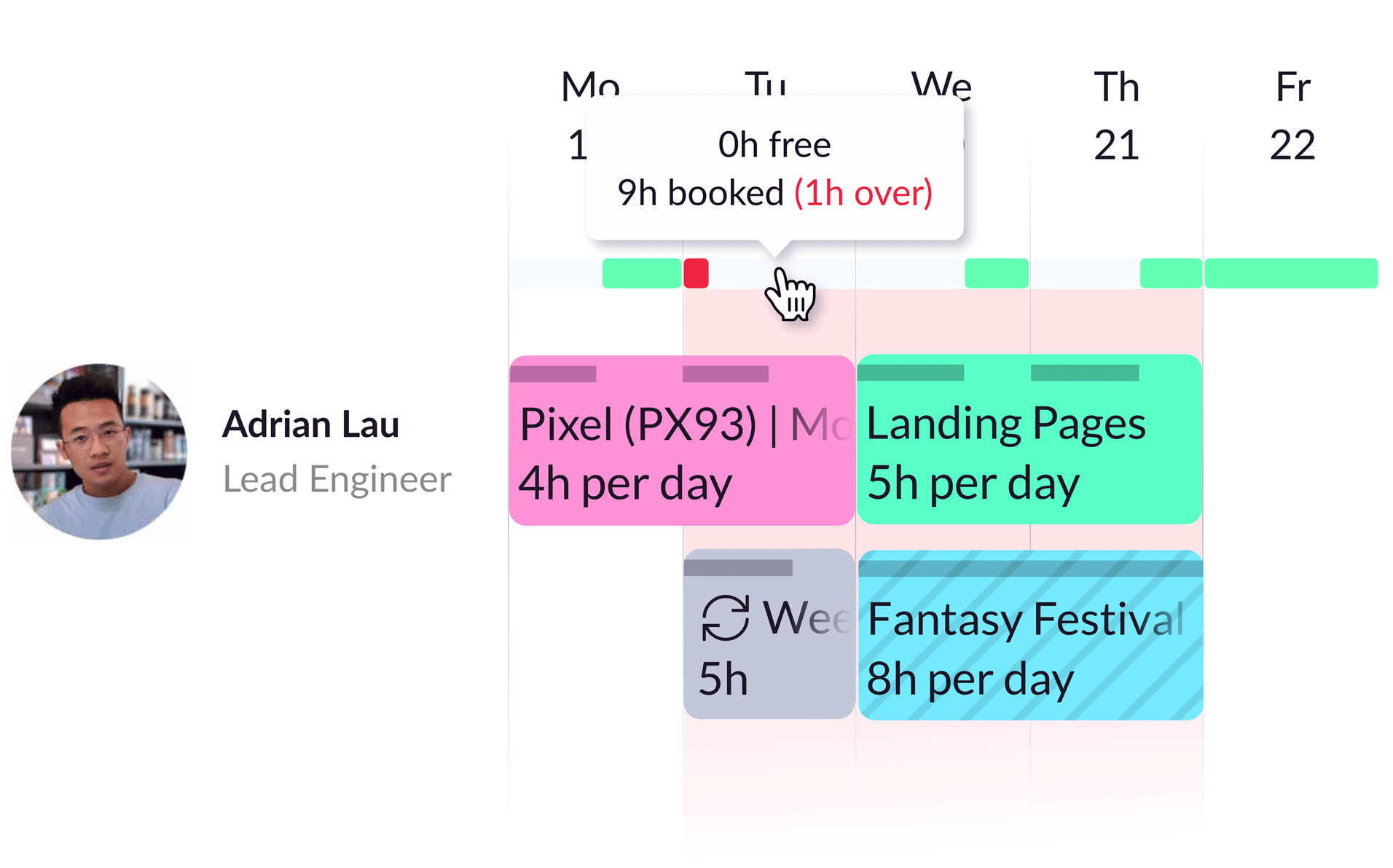
You can either add the clashing time to a waiting list or continue with overtime. A waitlisted booking would need to be resolved—meaning you need to have a conversation with the team member about freeing up time from other projects or reprioritizing workloads.
Otherwise, you need to find another team member or a freelancer who has the availability and the skills you require for the project.
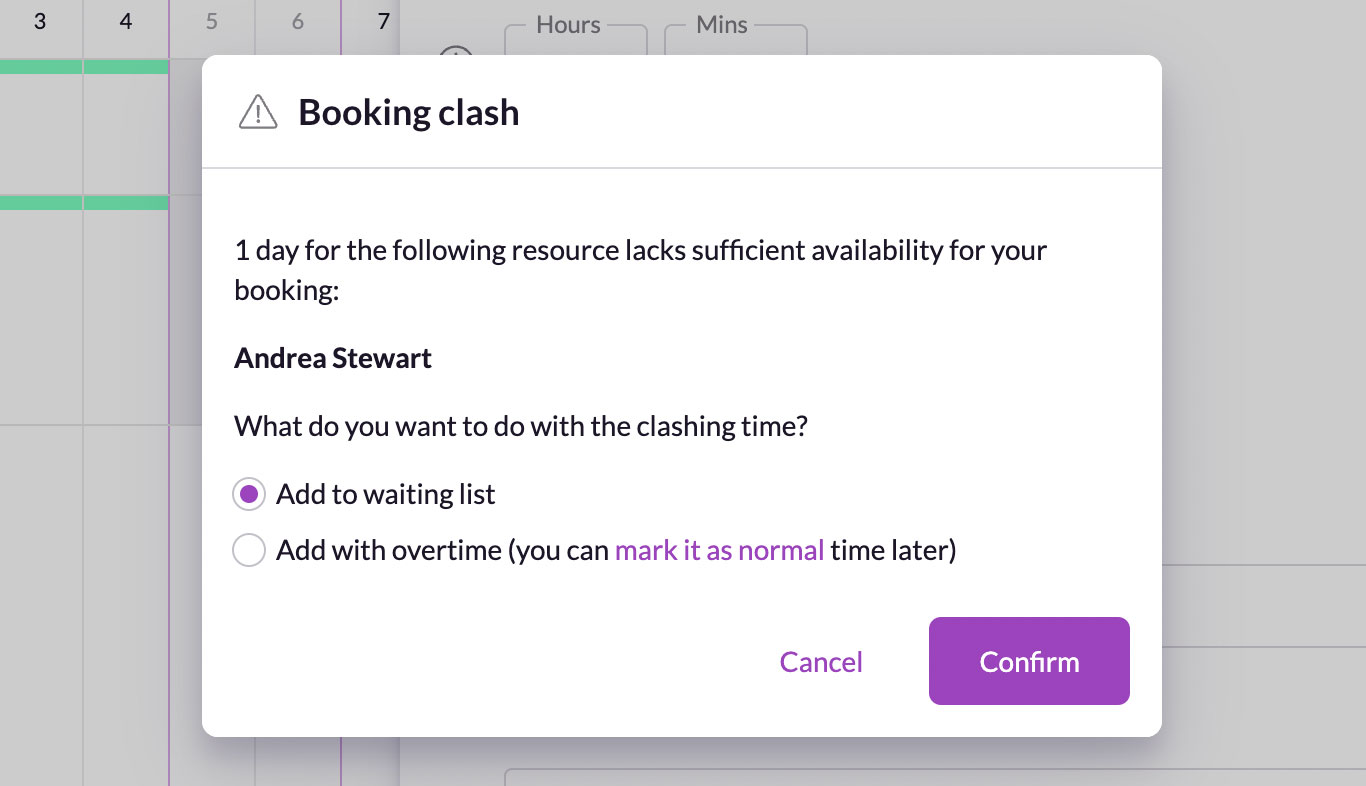
With this increased visibility of workloads, you can be sure that your project timelines are realistic and you increase the chance that deadlines will be met.
An active clash management system will save you time and help you proactively balance workloads to achieve project success. Occasionally, you may have to choose the overtime option, but it’s better off as a last resort than a habit.
Make data-driven decisions to build your dream team
Despite these barriers, you can still build your project dream team if you take a data-driven approach and create a process that goes beyond just matching skill sets and project needs. You need to zoom out and get a full view of employee schedules, utilization rates, and availability so that you’re not blindsided by vacations and overlapping projects.
Get it right you’ll create a resource scheduling plan that puts you on the path to that rarest of things – a project that’s delivered on schedule with minimal stress 🤩.




